Section III - Performance Tests
Real-World
Here we have two tests that are designed to put the performance of the motherboard and its subsystems to the test. Both require good CPU, Memory, HDD and even to a lesser extent audio and network performance. The two tests we chose were Lightwave 3D 9.6 and AutoGK 2.55. We will be adding at least one more real-world test to this battery in the near future, but for now these two cover quite a bit.
Lightwave 3D 9.6 x64 -
Lightwave is another industry standard application for 3D animation and rendering. It has a large tool base and the rendering engine is highly threaded (when using the right render model). This application is also capable of expanding to 4k resolutions as well as ray tracing for rending the light sources. For our testing we use frame 470 of the Pinball scene found in the LW 9 Content folder. This uses the newer perspective camera that is better suited to a multi-CPU/Core environment. This camera style also uses ray tracing and a much improved anti-aliasing method. Settings are shown below in the attached screen shot. Of course these are single frame renders and they are not a complete picture; for that you have to take into account the number of frames an average project would have. In a typical 30 second commercial you will have around 840 to 960 frames (at 28 – 32 FPS) this means that you have to multiply the time of a single frame by that number just to get a vague idea of how long that 30 seconds would take. This is because each frame will have a different render time based on complexity.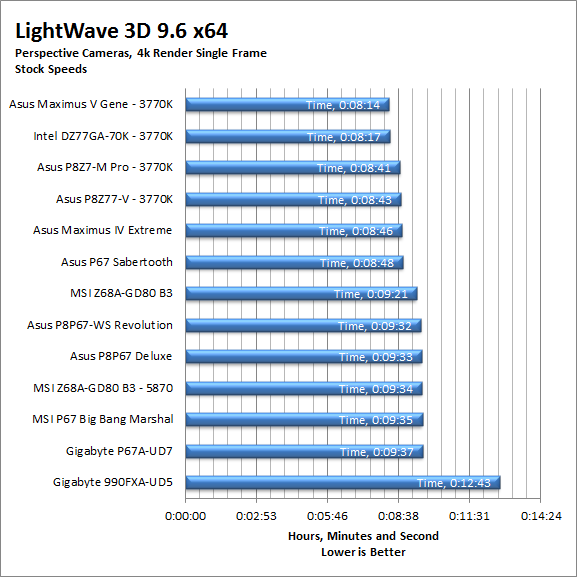
LightWave 9.6 can be very rough on a system especially if your memory performance is not where it should be. We are seeing one of those applications where a fast HDD is not going to improve your base performance. This does not mean that you won’t get a little bit back, but you are not going to get the same return you would using another application. The P8Z77-V fell into line in fourth place for both stock and overclocked testing. In practical terms we are seeing that the lower memory bandwidth can have a pretty negative impact on memory dependent applications (as you probably already knew), but it also means that as the memory is put under load (more applications run concurrently) you will see this board slowdown before you would see it on another board like the Gene or the DZ77GA-70K. We do hope that Asus does fix this issue in a BIOS update soon.
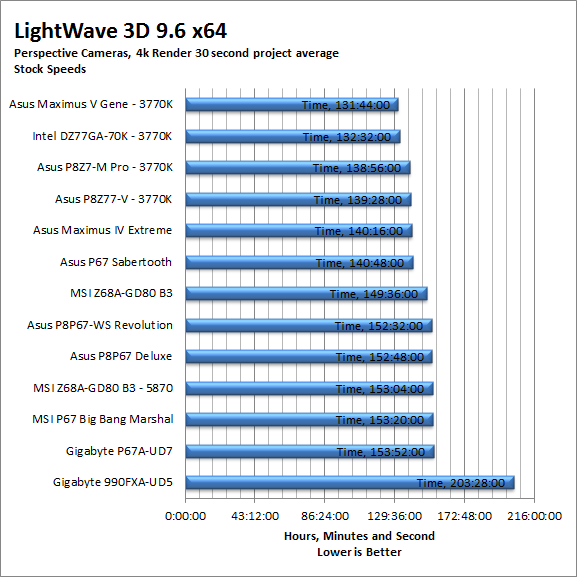
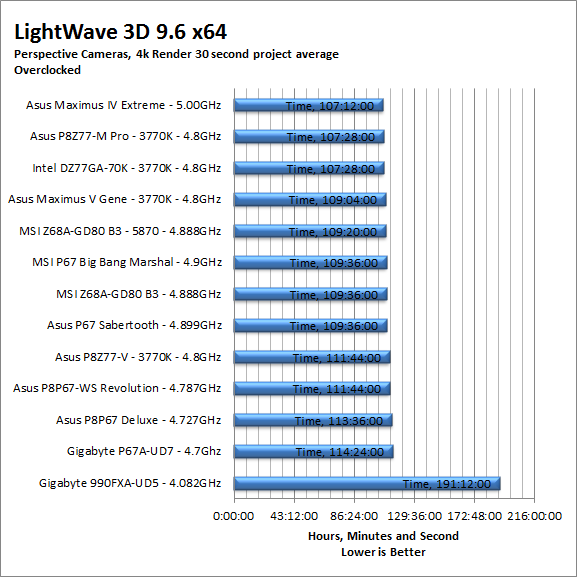
CyberLink Media Espresso 6.5 -
After having various issues with AutoGK and Intel CPUs with more than four cores we have changed our Media Encoding test to use Media Espresso from CyberLink. Although this new utility does not have the same ability to transfer directly from DVD it is still a good test to transfer different media types into a usable format for your iPad, iPod, or other media player. Our test involves using multiple (Six) 20 minute media files and transcoding them for an iPad. This gives us a very good indication of how well a motherboard can handle this type of work load.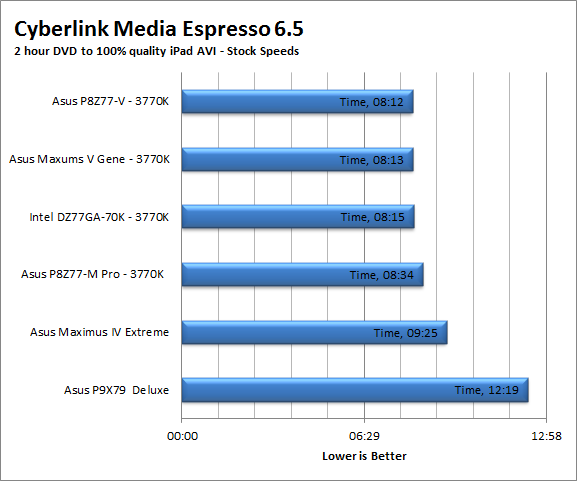
For Transcoding the P8Z77-V does very well at stock speeds (which is odd considering the memory performance that we saw), but then falls well behind when we overclocked the system. Unless we are missing the mark here we are betting that this is due to an issue with the SATA 2 controller on the board (we had the images on a drive that was plugged into the PCH SATA 2 controller) To check this we found that while overclocked the transfer speed between the image drive and the target drive was much slower than what we saw at stock speeds even though the RAW read numbers did not indicate this.
Motherboards
Asus P8Z77-V Motherboard Performance Review - Performance - Real-World
- Details
- By Sean Kalinich
- Hits: 48325
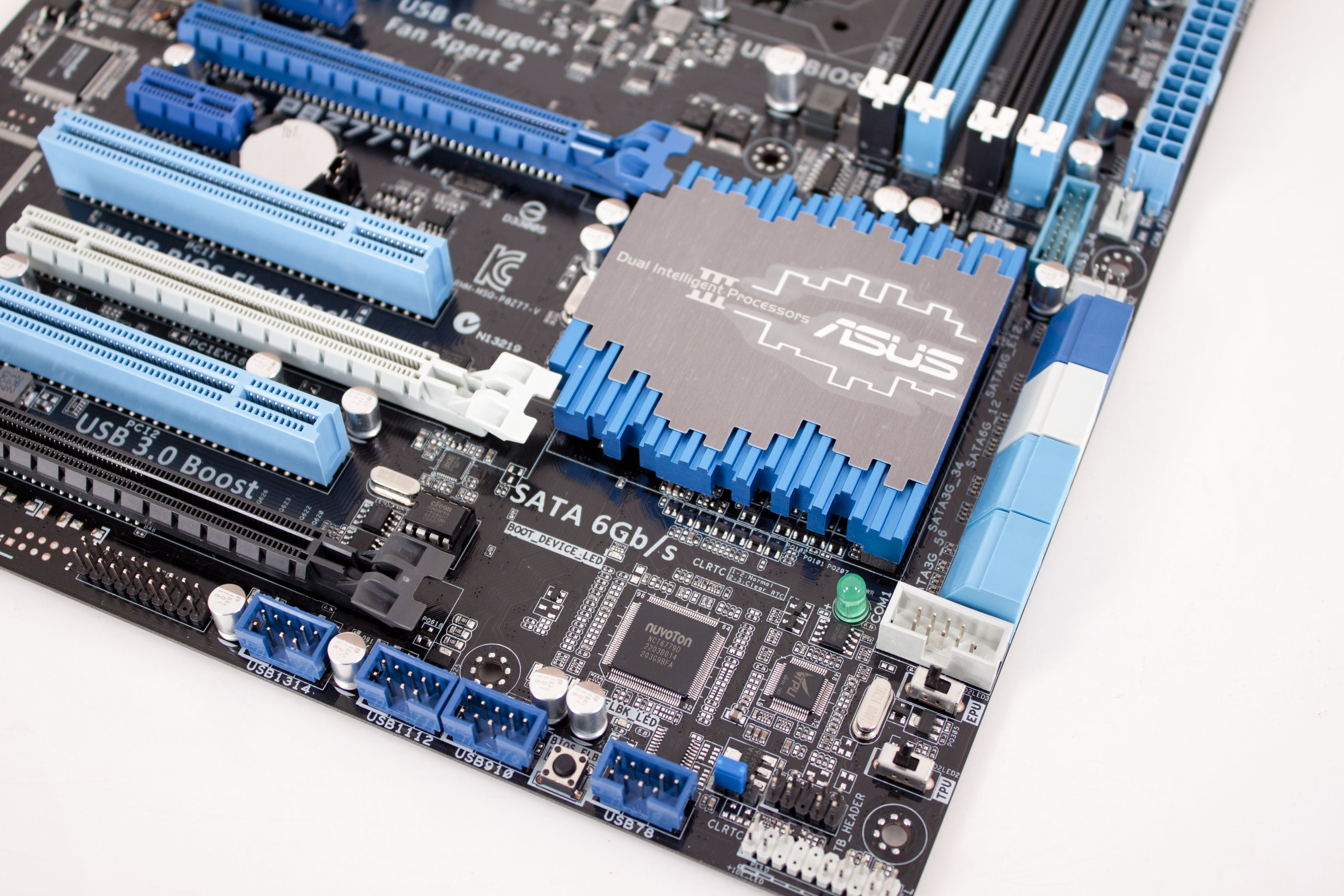 So now that we have covered all of the features and design choices for the P8Z77-V we are about to dive into the performance of this board. So far if what we have seen on paper adds up we should see some very good performance. After all Asus has been working on tuning their Z77 boards for a while and with the new trace layout we are seeing we might actually get to see some of that pop-up in every day performance. So without waiting too long let’s just get to it.
So now that we have covered all of the features and design choices for the P8Z77-V we are about to dive into the performance of this board. So far if what we have seen on paper adds up we should see some very good performance. After all Asus has been working on tuning their Z77 boards for a while and with the new trace layout we are seeing we might actually get to see some of that pop-up in every day performance. So without waiting too long let’s just get to it.
Article Index
Page 6 of 8



